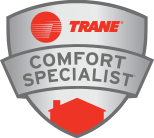Everyone at Design Comfort wishes you a Happy Valentine’s Day! Valentine ’s Day is all about showing your appreciation for your loved ones. Whether it is your significant other, your family, or your friends, today is a great day to let them know how special they are to you. A handmade card, a bouquet of flowers, or even a simple phone call can make someone’s whole day.
If you are thinking about a big gift for your family, an upgrade to your HVAC system might not be the most romantic gift, but it is a gift that keeps on giving! An air filter will keep you indoor air clean, and a new furnace or heat pump will make your home more comfortable and lower your utility bills. Making your home cozier is something your whole family will appreciate!
Call Design Comfort to learn more about how some HVAC system upgrades improve the comfort level in your home. And to make your Valentine’s Day a little sweeter, here is a recipe for Chocolate Covered Strawberries
INGREDIENTS:
16 ounces milk chocolate chips
2 tablespoons shortening
1 pound fresh strawberries with leaves
DIRECTIONS:
- Insert toothpicks into the tops of the strawberries.
- In a double boiler, melt the chocolate and shortening, stirring occasionally until smooth. Holding them by the toothpicks, dip the strawberries into the chocolate mixture.
- Turn the strawberries upside down and insert the toothpick into styrofoam for the chocolate to cool.
For more details, visit allrecipes.com.


